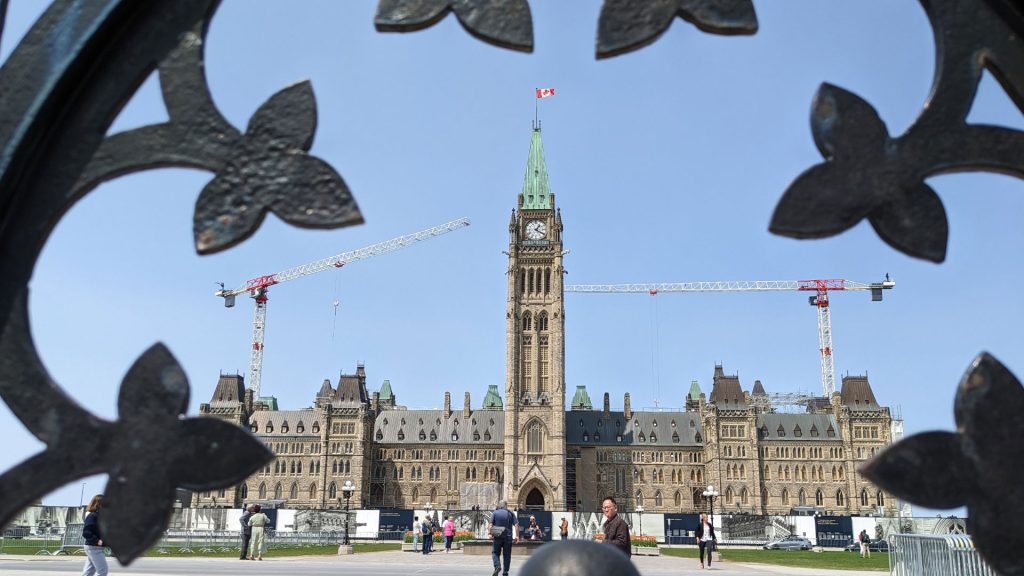
Four audits and 20 years later, the federal government and the Canada Mortgage and Housing Corporation, commonly called the CMHC, have made “little progress” in improving housing in First Nations communities across the country, says Auditor General Karen Hogan.
“Indigenous Services Canada and the Canada Mortgage and Housing Corporation have been mandated to work with First Nations to meet their housing needs by 2030. We found that 80% of these needs were still not met with 7 years left before 2030,” Hogan said in a report issued Tuesday.
In 2019, Canada pledged to close the housing gap in First Nations by 2030.
Hogan’s audit found that neither CMHC nor Indigenous Services Canada (ISC) “prioritized their limited funding for communities with the greatest housing needs.”
“For example, we found that, overall, First Nations communities with the poorest housing conditions received less funding than communities of the same size with better housing conditions.”
According to the audit, there are 119,000 housing units in approximately 600 First Nations in Canada. Hogan found that people living on First Nations are “4 times more likely to live in crowded housing and 6 times more likely to live in housing in need of major repairs than non‑Indigenous people, according to Canada’s 2021 Census.”
The auditor general said communities need 55,320 new housing units and repairs to 80,650 units to “close the housing gap.”
Hogan pointed to a report from the Assembly of First Nations (AFN) suggesting the cost to be an estimated $44 billion. That report also estimated that “an additional $16 billion would be needed for future housing needs related to population growth from 2022 to 2040.”
Hogan said over the past five years, CMHC and ISC have spent $3.8 billion improving the housing situation. That money “supported building new homes, repairing existing homes, and increasing First Nations’ capacity to manage housing,” said the auditor general.
From 2018 to 2023, 11,754 new homes were built and another 15,859 were repaired.
“This represents 21% of the new housing units and 20% of the repairs to existing units needed to close the gap,” she added. “There was no meaningful improvement in housing conditions in First Nations communities.
“From 2015-16 to 2021-22, the percentage of homes in need of major repairs decreased from 20.8% to 19.7%, while the percentage of homes in First Nations communities that needed to be replaced increased from 5.6% to 6.5%.”
Hogan said that mould in First Nation homes is a “long-standing health hazard,” but CMHC and ISC still hadn’t “identified the magnitude of the problem.”
“Neither the department nor the corporation had assurance that the quality of all the homes they funded met building code standards. Poor quality housing is a key contributor to mould growth.”
Hogan said if the government doesn’t provide more support to First Nations communities, people “will continue to experience poor and unsafe housing, which is often associated with family violence, substance abuse, suicide, poor physical and mental health, educational and economic obstacles, and migration from the community leading to cultural loss.”
Read the report here: Housing in First Nations Communities
The auditor general previously reported on housing in 2003, 2006 and 2011.
“As part of the broader reconciliation process, Indigenous Services Canada has a legislated mandate to transfer its responsibilities, including housing, to First Nations,” Hogan said.
“We found that Indigenous Services Canada was at the early stages of transferring control of housing to First Nations, but no overarching policy framework was in place to guide the department’s work in transferring its programs to First Nations communities.”
NDP Indigenous Services critic Lori Idlout (Nunavut), said the government is “consistently failing” First Nations communities when it comes to housing.
“Housing is a human right. Everyone deserves a safe and affordable place to call their home— and “First Nations’ right to housing is being neglected,” Idlout said. “The AG report confirms the ongoing painful legacy of colonialism and decades of Liberal and Conservative governments’ underfunding have caused this housing crisis in First Nations communities. This neglect must stop. First Nations deserve safe homes.”
When asked whether the government will meet its commitment to close the First Nations housing gap by 2030, Patty Hajdu, minister of Indigenous Services, said the government is working on it.
“That’s why that goal is in place. So that it focuses the mind of all departments of the government of Canada that we need to work faster and that we need to be making ambitious investments like the ones we’ve already made,” she said. “But I would argue more and that we need to be working with partners to make sure that we have the creative solutions to closing that gap.”









